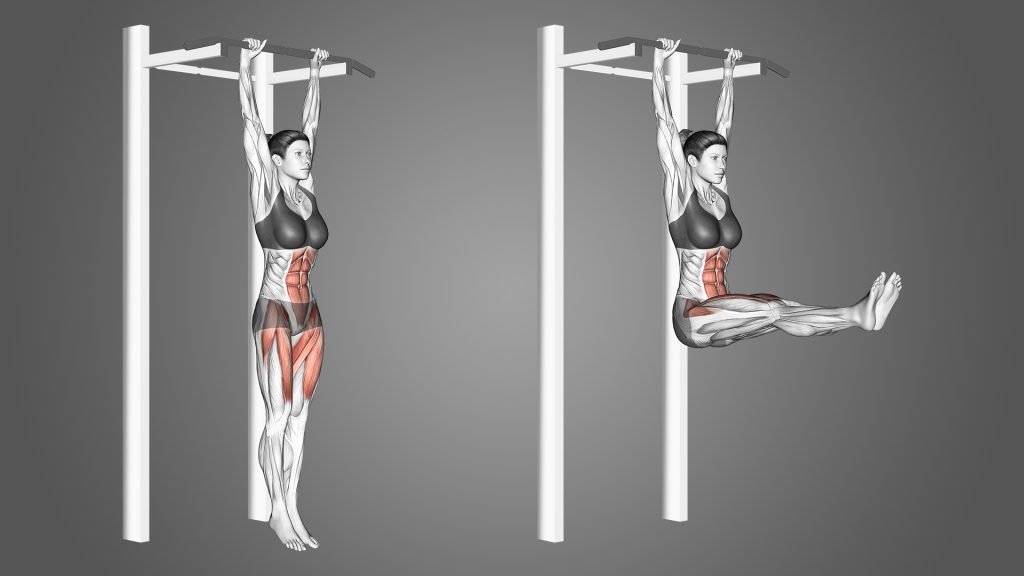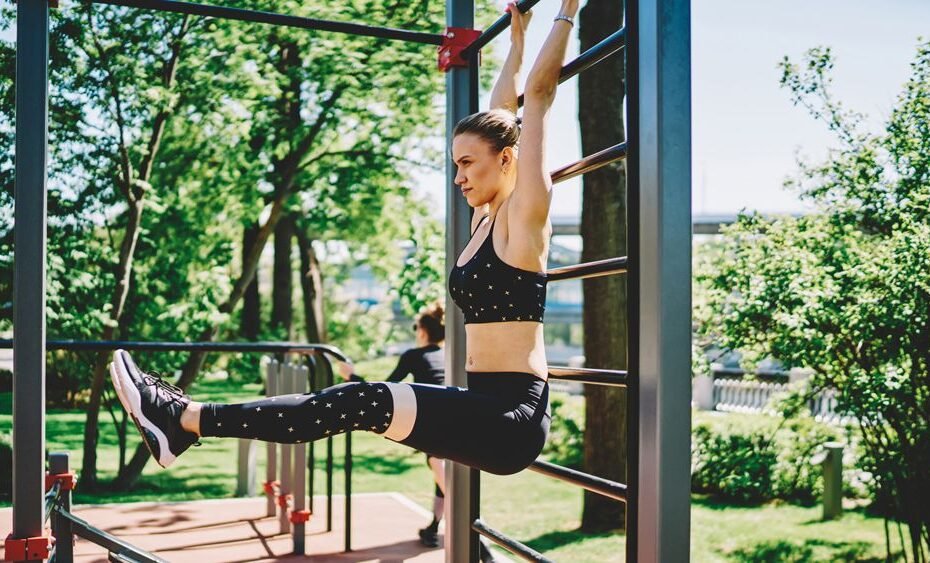Hanging leg raises are a challenging and effective exercise that targets the entire core, helping you build strength, stability, and definition. This guide delves into the intricacies of hanging leg raises, offering step-by-step instructions, insights into the muscles engaged, benefits, variations, alternatives, common mistakes, and essential considerations to help you master this dynamic movement.
Muscles Worked:
Primary Muscles:
- Rectus Abdominis (Front Abs)
Secondary Muscles:
- Hip Flexors
- Obliques (Side Abs)
- Transverse Abdominis (Deep Core)
How to Perform Hanging Leg Raises:

- Setup: Hang from a pull-up bar with your arms fully extended and your body in a straight line.
- Initiation: Engage your core muscles and stabilize your body by slightly tucking your pelvis.
- Lift: While maintaining a controlled motion, raise your legs by flexing your hips and bending your knees.
- Contraction: Continue lifting until your thighs are close to your chest, focusing on the contraction in your core.
- Lowering: Gradually lower your legs back to the starting position while keeping your core engaged.
- Repetition: Complete the desired reps while focusing on maintaining proper form and control.
Benefits of Hanging Leg Raises:
- Comprehensive Core Engagement: Hanging leg raises engage the entire core, emphasizing the rectus abdominis.
- Hip Flexor Strength: The movement also targets and strengthens the hip flexor muscles.
- Stability Challenge: Requires strong stabilizing muscles to prevent swinging during the exercise.
- Functional Fitness: Enhances core strength for improved posture and daily movements.
Variations:
1. Hanging Knee Raises:
- Raise your knees toward your chest instead of your thighs for a slightly easier variation.
2. Hanging Windshield Wipers:
- Perform a controlled side-to-side movement with your legs while hanging.
Alternatives:
1. Captains Chair Leg Raises:
- Use a captains chair apparatus to perform leg raises while supported by armrests.
2. Cable Crunches:
- Target your core from a standing position using a cable machine and rope attachment.
Common Mistakes to Avoid:
- Swinging: Prevent excessive swinging of the body by maintaining controlled movements.
- Using Momentum: Use your core muscles to lift your legs, avoiding reliance on momentum.
- Limited Range: Aim for a full range of motion by lifting your legs as high as your flexibility allows.
Key Considerations:
- Grip: Choose a grip that’s comfortable for you on the pull-up bar.
- Breathing: Exhale as you lift your legs and inhale as you lower them.
- Progression: Gradually increase the range of motion and intensity as your core strength improves.
Conclusion:
Hanging leg raises provide a powerful way to strengthen and define your core muscles. By mastering its execution, understanding the muscles engaged, appreciating the benefits, exploring variations and alternatives, avoiding common mistakes, and considering key factors, you can seamlessly integrate hanging leg raises into your fitness routine. Approach this exercise with dedication, proper form, and a commitment to achieving a strong and stable core for optimal results.
